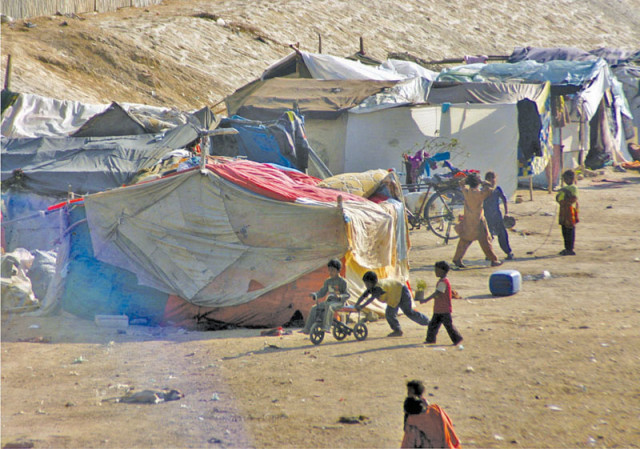Karachi continues to spread but without direction
Urban population recorded during the 1998 census was nearly 43m, but was estimated to be around 63.1m in 2010

Karachi continues to spread but without direction
In Pakistan, demographic trends show that the country’s population has been rapidly urbanising, with average annual rate of urbanisation exceeding four per cent since 1951. According to the Task Force Report on Urban Development, 2011, Planning Commission, Government of Pakistan, it is estimated that by 2030, 45.6 per cent of Pakistan’s population will be living in urban areas and around 12 major cities will house more than one million people each.
The urban population recorded during the 1998 census was nearly 43 million, but was estimated to be around 63.1 million in 2010. It is estimated to exceed 121 million by 2030. The 45.6 per cent level of urbanisation in 2030 would then be the highest among South East Asian countries.
Internal migration
In Karachi, one major cause for urban expansion and the resultant haphazard growth patterns is the exponential rise in population, caused mainly due to migration. These migration waves and resulting changes in the socio-economic and political dynamics of the city have also largely shaped the urban development trends that have emerged over the years.
Even before the creation of Pakistan, growth in population had primarily been due to migration, linked with economic and military reasons. Being a port city and having favourable climate enhanced its economic potential, while its strategic location added to its military significance. Between 1911 and 1941, Karachi’s population increased by 133.4 per cent and it has been estimated that 90 per cent of the growth between 1921 and 1941 was a result of migration.
In 1947, the population of Pakistan was 450,000, which swelled to 1.14 million by 1951 due to the influx of 600,000 refugees from India. By 1972, population was just over 3.6 million and a major cause of the increase was migration. These migrants integrated mostly into the transportation and construction sectors.
If we analyse the time period between the last two censuses, we find that 638 per cent of the population increase in Karachi between 1981 and 1998 was due to migration. It is estimated that half of this increase was due to migration from other areas of Pakistan. In addition, between 1972 and 1978, an estimated 350,000 refugees from Bangladesh - formerly East Pakistan - moved to Karachi, while between 1977 and 1986, about 300,000 Iranian and Afghan refugees also settled in the city in the wake of the Soviet invasion of Afghanistan.
A city once called the Pearl of the East - a symbol of hope and harmony that promised so much - now finds itself looking uncertainly towards the future as it fights for survival amidst growing racial, ethnic and political tensions, along with bad governance and insecurity.
The consequences
A major challenge faced by the government owing to these migration cycles was providing housing, land tenure and services to these migrating communities. There was a failure to tackle this issue and the agencies could not incorporate the relevant policy and strategic framework for addressing this urban development challenge. These compound failures led to the establishment of squatter settlements. According to noted architect and urban development expert, Arif Hasan, the population residing in these settlements has now increased to 61 per cent or 1.2 million households.
Squatter settlements are now giving way to complete land-grabbing. Since transactions of land, provision of services etc. are taking place outside the mandate of the government, a ‘parallel’ economy has developed. The burden of ‘non-tax paying’ communities is being borne by the taxpayers in terms of surcharges and other taxation provisions.
What should be done?
· Revisit the rural-urban interface to understand the causes of such high level migrations more clearly
· Migrants coming to Karachi should bring their allocated finances with them
· Limit further expansion of settled areas, with one option being the strict sanction and enforcement of Karachi’s agricultural hinterland being used only for agricultural purposes
· Options controlled vertical growth in the inner parts of the city on government land for developing low-income housing schemes with relevant environmental and social safeguards
The writer is an urban planner and runs a non-profit organisation based in Karachi focusing on urban sustainability issues
Published in The Express Tribune, September 8th, 2014.



















COMMENTS
Comments are moderated and generally will be posted if they are on-topic and not abusive.
For more information, please see our Comments FAQ